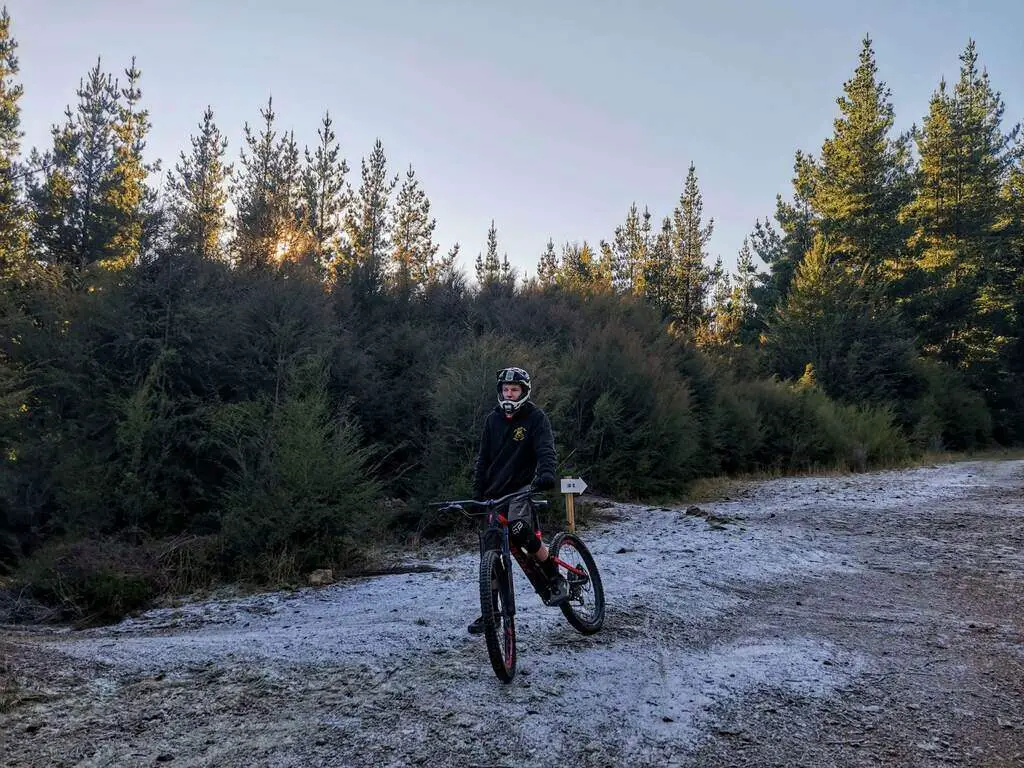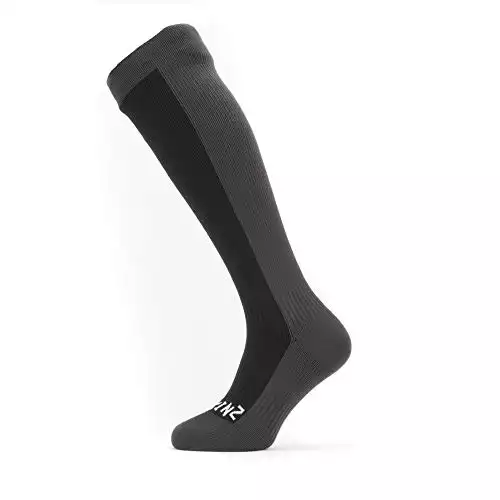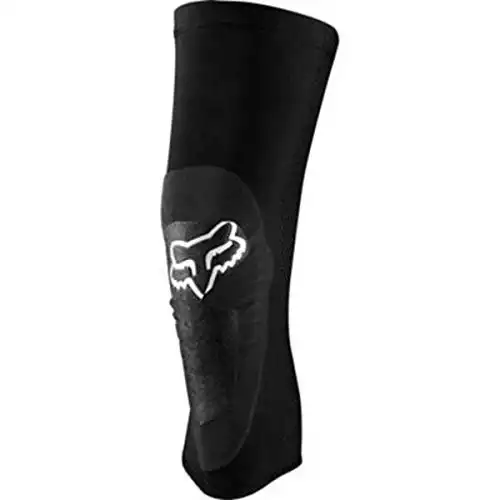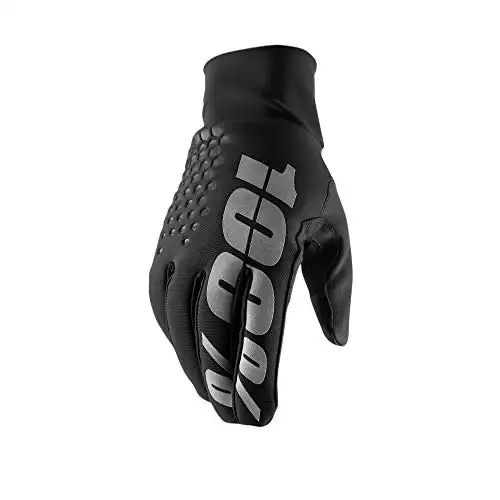Climbing a trail on your favorite mountain bike isn’t an activity reserved for only warm weather months. Mountain biking is also a fun and thrilling pursuit to enjoy on a winter weekend.
Winterizing your bike in preparation for conquering snowy terrain is only one part of the equation. You also need to wear clothing that will offer your body sufficient protection from colder, damper conditions.
Mountain Biking Winter Attire
Going mountain biking in the winter requires planning ahead to protect yourself from frostbite, hypothermia, and other potential dangers lurking for anyone who spends extended time outdoors during cold weather conditions.
The sun is out for a shorter amount of time in the winter months, and the temperature can drop fast when you’re on a mountain trail. If you hit the trail unprepared, it can spell disaster.
Dressing to combat winter weather will help you stay warm, dry, and comfortable. This will help keep you safe while you take time out to explore new and exciting trails. After all, you want to create numerous fun memories about your excursion. Why ruin it with preventable, unnecessary risks for yourself?
What to wear mountain biking in winter? The good news is you have plenty of options for appropriate attire. However, if you don’t know where to begin, this guide will offer you a few helpful suggestions to prepare you for your next biking excursion.
Waterproof shoes
Keeping your feet warm and dry is so important. Toes are highly susceptible to frostbite injuries if your shoes become damp from snow, slush, or ice while pedaling.
You can protect your feet with a pair of insulated waterproof shoes. Paired with flat pedals, insulated waterproof shoes will make it easier to push yourself up a slippery trail while your feet stay warm — even as the temperatures grow colder around you.
This type of footwear doesn’t come cheap, but it more than makes up for the cost with extended durability. A good pair of waterproof shoes are guaranteed to last a long time before you need to plan another shopping trip for replacements.
Check out our top picks for winter mountain bike shoes here.
Waterproof socks
Waterproof shoes are only one necessary component for keeping your feet dry and warm out on the trail. A pair of sturdy waterproof socks give your feet a crucial additional layer of protection from the elements.
Waterproof shoes or socks alone won’t offer complete protection. But, working together, they are unstoppable.
High-end waterproof socks have a built-in liner to shield the fabric from absorbing copious amounts of chilly water on the trail. That means a spray of slush or snow gets stopped in its tracks instead of leaving you instantly wet and cold below the ankles.
Knee warmers/Knee Pads
You can’t underestimate the importance of keeping your muscles and joints warm while you ride. Stiff muscles and joints are more prone to strains and tears. Suddenly, you’re worried about much more than feeling a little cold. You’re dealing with a potentially serious injury.
Torn ligaments or tendons require a recovery time from a few weeks to a few months. Lost work time and medical bills can put you in a bad spot financially.
Knee warmers are crucial to keeping your knees safe. They assist the muscles and joints in retaining heat during a ride and function like knee pads to protect your knees from serious injuries if you fall off your mountain bike.
In my opinion, if you are going to buy a set of knee warmers you might as well get a set of knee pads. They keep your joints warm as well as provide protection in case you take a spill. For more on knee pads check out our top picks here.
You can also opt for a pair of full-length waterproof tights if you want to give each leg additional warmth below your bike shorts.
Waterproof shorts
Raise your hand if you enjoy riding anywhere with a soaked butt. It’s a safe bet no one reading this article thrust their hand in the air.
Waterproof shorts are still breathable and comfortable, but they also fend off excess spray from tires that can otherwise leave your upper legs and butt feeling damp and cold. That makes for a more comfortable ride up and down the trail, even when the temperature drops.
You have options with waterproof shorts: form-fitting traditional Lycra shorts that are popular during the summer months or baggy shorts that are more relaxed and comfortable in terms of fit.
Baselayers
Common sense dictates that you wear warm, comfortable base layers when doing any outdoor activity in the winter. Long sleeve shirts protect your arms from exposure to the cold air and help protect your core muscles from getting excessively stiff and cold.
Typical choices for base layers include wool, polyester, or some kind of blend of natural and synthetic fibers. Wool shirts tend to stay warmer when wet. Tops made from synthetic fibers, however, dry out faster than wool ones.
The most important consideration is picking whichever fabric feels most comfortable against your skin. It is best to avoid materials like cotton as when they get wet they pull heat away from your body, which can leave you very cold!
MTB jackets
Having a waterproof jacket is as equally important as wearing the other waterproof attire. Cold air can buffet your chest when you pick up speed on a trail, so a jacket offers an important layer of protection. You want a jacket that has both long sleeves and a high neck.
Gilets are a good choice on warmer days because they allow your arms and armpits to breathe and cool when you work up a sweat. Still, these sleeveless jackets don’t work well when the weather turns cold.
Selecting a jacket without a hood might be your best choice. Some waterproof jackets feature an attached hood which can be tucked away inside a neck pouch or removed from the collar as needed with a zipper.
Hoods are useful in shielding your ears and head from the chilly air when you’re walking around. Still, they can obstruct your peripheral vision while riding.
That’s a definite safety concern, especially if you’re biking on a narrow winding trail where one false move can lead to a crash or worse.
Headband
Headbands are versatile and practical accessories when it comes to keeping yourself warm. Use a thick headband as an ear covering underneath your helmet. A broad tight-fitting headband will prevent cold breezes from bombarding your ears while you’re picking up speed on the trail.
It also works effectively as an impromptu scarf to keep your neck nice and warm if you have other types of ear coverings.
Of course, you can double up the protection and pair a headband with a neck tube or neck warmer. This way, you don’t have to choose between giving your ears or giving your neck an extra layer of warmth. Instead, you can cover both spots at the same time.
Glasses or goggles
Protecting your eyes is as important in the winter as in the summer. The glare from snow can be blinding and damaging to your eyes with long-term exposure.
It can also pose a safety hazard because the glare will interfere with your ability to see and focus on the trail. If you decide to go and ride on a sunny day, tinted sunglasses do a great job shielding your eyes. Clear lenses are probably a better choice on cloudy days because sunglasses block out too much sunlight in those conditions.
Wearing protective glasses isn’t just about guarding against excessive exposure to sunlight. Glasses or goggles also function as a good last line of defense against a persistent wind splashing mud or other particles directly into your eyes.
Thick winter gloves
Your hands can get cold in a hurry while you’re out riding through the snow and ice. Much like unprotected feet or an exposed face, unprotected hands are vulnerable to developing frostbite with extended exposure to the elements.
Pick gloves that have a nice balance between padding and fabric. You want gloves that are thick enough to keep your fingers warm, but you also want to avoid excessive padding that makes it difficult to grip the handlebars while you’re riding.
Check out our top picks for winter MTB gloves here.
If you choose a thinner glove, you can combine it with a latex glove underneath to give your hands additional warmth.
Wear gloves with windproof backs. This will protect your hands from excessive cold while they remain mostly stationary on your handlebars for extended periods.
Long MTB pants
Long MTB pants are an excellent option for staying warm on colder days. Let’s face it. Waterproof shorts and tights aren’t going to offer complete shielding from the wind buffeting your legs if the sun isn’t out. However, long pants are quite comfortable and offer the sort of protection you’re seeking from cold and snow.
They keep your legs warm from thigh to ankle. That’s especially nice if you attack trails covered deep with snow. If you go with long waterproof pants, you can also stay relatively dry in slushy or wet conditions.
Beanie or ski mask
Bike helmets are necessary for protecting your skull from serious injury in case of a sudden crash. However, most aren’t designed to keep your head from getting chilly when the thermometer takes a plunge.
So if you ride a lot in winter, it would be best to get a winter helmet. Check out our guide here for more.
A thick beanie or ski mask worn under the helmet can do the trick. Beanies are great for protecting your ears and keeping excess body heat from escaping through your ears.
Ski masks are highly effective in keeping your face warm, an important concern while riding. Your exposed cheeks and nose can get buffeted by cold air and are vulnerable to frostbite if you spend extended time on the trail.
Stay Warm and Stay Dry
Mountain biking in the winter is so much fun. You get a chance to see a different side of your favorite trails and witness the pristine beauty of snow-covered trees and frozen creeks.
In addition, chances are you’ll enjoy some solitude as bike trails see much lower usage during the winter months.
Many people don’t realize mountain biking can be a fun and rewarding winter activity. But it is something you can enjoy if you prepare before you hit the trail.
Preparation isn’t limited to winterizing your bike with the right tires, grips, and other essential gear that’s designed for snowy conditions. It’s also about dressing the part.
There are several useful options for thick waterproof attire perfect for mountain biking on a winter day. Forget staying indoors and huddling around the fireplace. Instead, go outside and put some time in on your favorite trails.










